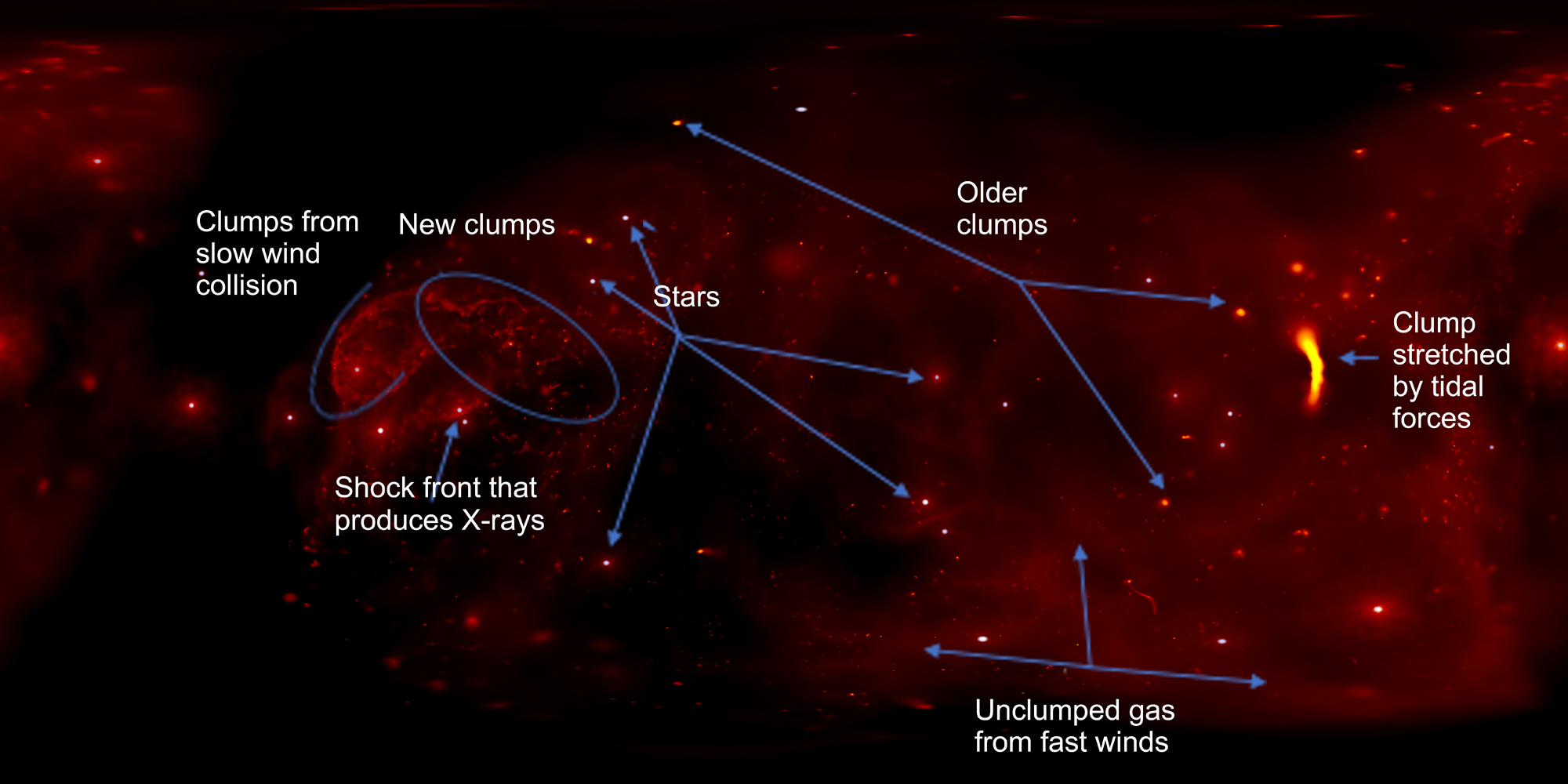Wild 360-Degree Video Lets You See the Milky Way As a Giant Black Hole Would
NATIONAL HARBOR, Md. — Ever wish you could see the galaxy from the perspective of a black hole? A new 360-degree simulation that uses data from NASA's Chandra X-Ray Observatory is helping astronomers better understand more than 22 stellar giants found at the center of the Milky Way galaxy.
The simulation, unveiled here Wednesday (Jan. 10) at the 231st meeting of the American Astronomical Society (AAS), allows you to view over 20 Wolf-Rayet stars, which are massive stars orbiting the center of the Milky Way from a distance of about 1.5 light-years. The 360-degree simulation, which you can see on YouTube here, starts 350 years in the past and moves forward 500 years, according to an accompanying statement. Check out the simulation below:
In the simulation, viewers can stare outward from Sagittarius A*, the supermassive black hole that dominates the Milky Way's galactic center. Though the video is available on YouTube, the best way to watch it is with virtual-reality (VR) systems, such as the Samsung Gear VR or Google Cardboard, according to NASA researchers. The video mimics the effect of VR goggles as you use a smartphone to pan around and see different parts of the simulation. [Best Samsung Gear VR Apps]
"I have placed you, the viewer of the video, as Sagittarius A*, so you had a very good holiday season and gained 4 million solar masses," joked lead researcher Christopher Russell, of the Pontifical Catholic University of Chile, as he presented the video. "You now have stars that are orbiting you."
So how do astronomers get the data that makes this visualization possible?
It turns out that the Wolf-Rayet stars release streams of gas into interstellar space, and when the former outer layer of one star comes into contact with that of another star, "sonic booms" are created. These shock waves then heat the gas to millions of degrees, causing a glow that Chandra can pick up as X-rays, according to NASA. The visualization is based off of fundamental infrared data on the Wolf-Rayet stars, detected with the European Southern Observatory's Very Large Telescope, as well as data about the gas's distribution and incredibly high temperatures taken by Chandra.
Astronomers can watch the stellar gas coming off the Wolf-Rayet stars and can also watch a simulation in which the black hole interacts with the gas. In the second video, the gravity of Sagittarius A* pulls the gas inward. The black hole also produces outbursts that expel material, causing the "outburst" video to be darker at moments.
Breaking space news, the latest updates on rocket launches, skywatching events and more!
The simulation also provides an opportunity to visualize other cosmic phenomena. As long as you have a large data set with enough variation, Russell said during a panel session at the AAS meeting, you can extend the simulation technology to model other worlds, too. He added that the next project may involve visualizing binary (double-star) systems.
Follow Doris Elin Salazar on Twitter @salazar_elin. Follow us @Spacedotcom, Facebook and Google+. Original article on Space.com.

Doris is a science journalist and Space.com contributor. She received a B.A. in Sociology and Communications at Fordham University in New York City. Her first work was published in collaboration with London Mining Network, where her love of science writing was born. Her passion for astronomy started as a kid when she helped her sister build a model solar system in the Bronx. She got her first shot at astronomy writing as a Space.com editorial intern and continues to write about all things cosmic for the website. Doris has also written about microscopic plant life for Scientific American’s website and about whale calls for their print magazine. She has also written about ancient humans for Inverse, with stories ranging from how to recreate Pompeii’s cuisine to how to map the Polynesian expansion through genomics. She currently shares her home with two rabbits. Follow her on twitter at @salazar_elin.


